Note: This website was automatically translated, so some terms or nuances may not be completely accurate.
We've launched the "Living Lab" project to activate Uncle Moratorium.
The "Senior Values Segments" are... a new approach to understanding the senior demographic, whose thinking and behavior are diversifying and becoming more complex. They are segments classified by "values." Values are categorized into 6 types, each plotted on a two-axis, four-quadrant grid based on "whether behavior is proactive or reserved" and "whether orientation leans traditional/conservative or prefers change and stimulation."
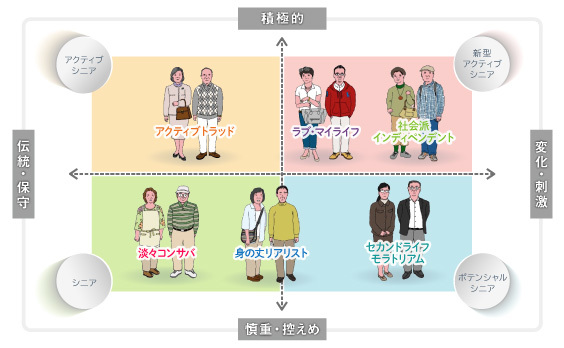
Active Trad: Primarily consists of retirees living comfortably with ample time and money. They are proactive in consumption and activities but hold strong traditional family values. This segment most closely matches the image traditionally associated with "active seniors."
Love My Life: Strong pursuit of youth and beauty, anti-aging awareness, fond of new things, well-informed, and sensitive to trends. One of the "new types" of active seniors.
Socially Conscious Independents: Value human connections, are eager to build new networks and engage in intergenerational exchange. Another pattern of the "new type of active seniors."
Unassuming Conservative: Fully satisfied with their current life, desiring nothing more. They hold no strong opinions and live each day calmly and peacefully. Closest to the traditional image of "elderly people."
Down-to-Earth Realist: Often expresses resignation, saying they don't have money or that something is too expensive to do. They aren't necessarily poor, but their consumption is passive, perhaps due to future anxieties.
Second Life Moratorium: They feel strongly about not wanting to be left behind by society and desire connections with people and the community. However, they don't know how to achieve this and are searching for how to spend the rest of their lives.
When the Moratorium Man moves, society moves
The "Moratorium Uncle" frequently mentioned in this series.
At our Video Research Ltd. Hito Institute's "VR Aging Lab," we affectionately call men in the "Second Life Moratorium" segment of our senior values segmentation this.
After retiring from the company where they spent most of their time, they should be able to do anything they like—work, study, hobbies, volunteering... Yet when that moment finally arrives, these Moratorium Uncles find themselves lost. They wonder what to do, where to go, how to step into new places. They hesitate, unable to take that first step.
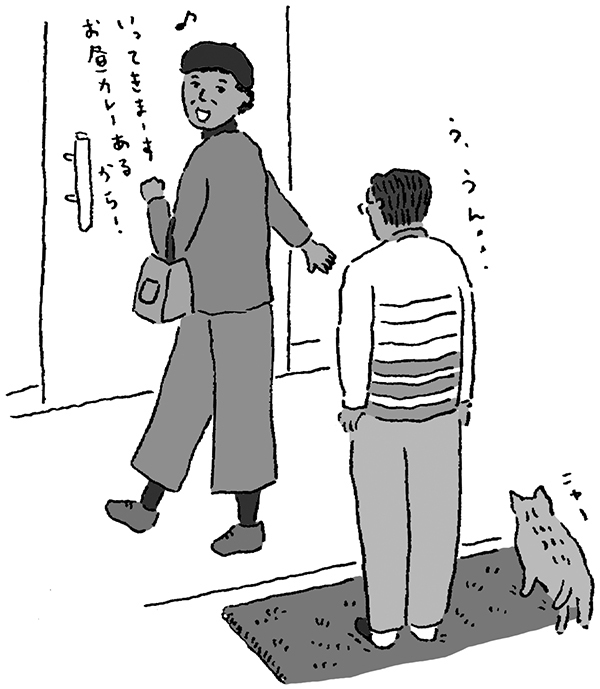
This type actually makes up the largest segment among the six, accounting for 30% of all senior men.
Meanwhile, Japan is a super-aged and shrinking society leading the world. Activating the senior population is crucial not just for the market economy, but also from the perspective of utilizing social resources—human talent.
We believed that if these "moratorium uncles" started moving, it would lead to the effective utilization of human assets for society and should also stimulate the economy. Going out increases opportunities to interact with people. They'll likely become more sensitive to gathering information to create conversation topics and start paying more attention to their appearance. They'll also walk and move their bodies more, leading to better health.
This creates new demand. Furthermore, if they become active not only as consumers but also as workers, it will accelerate the positive economic cycle even more.
Moratorium men harbor a sense that "things can't stay this way" and seek opportunities to reconnect with society. The desire is there, but they can't take that first step. They wish someone would invite them, give them a push... Couldn't we create a system, as a research company's business, to help these Moratorium Uncles take that first step? With this vision in mind, after much trial and error, we have now launched a "Living Lab" in collaboration with the Minami-ku Social Welfare Council (Minami-ku Shakai Kyōgikai) in Yokohama City.
Industry, Government, Academia, and Citizens: Solving Social and Corporate Challenges Through Four-Party Collaboration
A "Living Lab" broadly refers to activities where industry, government, academia, and citizens co-create solutions—ranging from developing and improving services and products that enrich daily life to addressing societal challenges. This is achieved by bringing research and development functions (labs), traditionally located within companies, into areas where people actually live (near their living spaces).
Originating in the United States in the 1990s as one approach to open innovation, it has rapidly developed, particularly in Northern Europe. In recent years, various examples have also become visible in Japan.
We wondered if we could use this Living Lab mechanism as an opportunity to bring Uncle Moratorium out of the house and into society.
The challenge faced by the Minami Ward Social Welfare Council was discovering and nurturing talent to take on community leadership roles. While the council had long recognized the power and skills of retired senior men, it had been implementing various measures to get them out of the house and actively involved in the community. However, it was seeking new ways to broaden its talent discovery efforts.
For us, this space offered a chance to directly hear real seniors' voices. Utilizing it for discovering diverse insights, formulating hypotheses, and developing actual products/services to solve problems could lead to business opportunities.
Therefore, building on our qualitative research methods as a research company and with the cooperation of the Obirin University Institute of Gerontology, we collaborated with the Minato Ward Social Welfare Council to develop the "Video Research Ltd. Human Research Institute-Style (Hito-Ken-Style) Living Lab." This space connects the community, businesses, and older men to solve each party's challenges. (Figure 1)
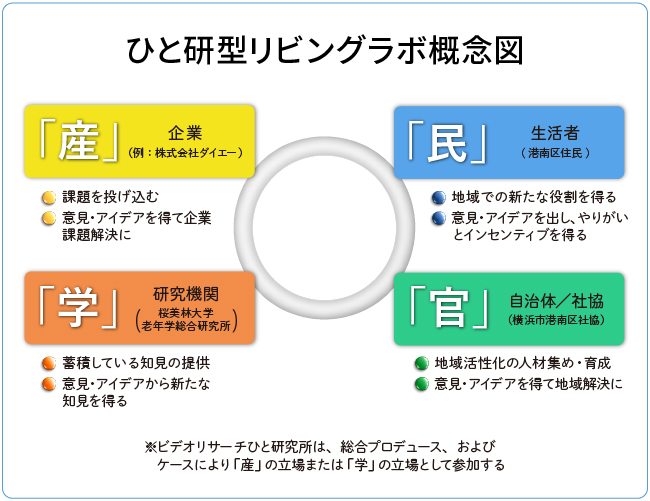
Three Key Features of the "Hito-Ken Living Lab"
While various mechanisms and interpretations of "Living Labs" exist at present, our "Human Research Institute-Style Living Lab" possesses several characteristics that distinguish it from other Living Labs.
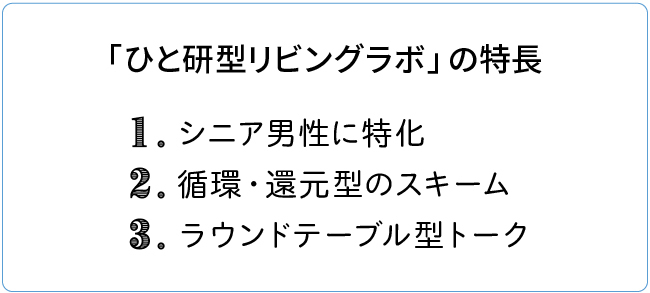
1. Focus on Senior Men
First, we built it specifically for senior men because our primary goal is to activate the "Moratorium Men." As we've emphasized, in an era of projected population decline, seniors are vital societal assets. If we can motivate those who lacked the impetus to act, it will invigorate various aspects of society—from consumption to solving local issues.
We aim to stimulate not only those already active, but also the latent motivation of "Moratorium Uncles" who feel stuck—their sense that "things can't stay this way" and their desire for change. We want to give them that push to take the first step. Seeing these stimulated uncles take action will inspire others to step forward... creating a virtuous cycle.
2. A Circular, Redistributive Scheme
Discussion topics are limited to those that connect corporate challenges with local community challenges, and lead to solutions for both.
Simply using keywords like "volunteering" or "contributing to the community" presents a high hurdle for middle-aged men new to community involvement. Adding the element that it also contributes to "developing corporate products and services" made it easier for them to see it as something personally relevant.
Conversely, some people react negatively to cooperating with initiatives that have a strong corporate identity. For them, the benefit lies in the fact that it also contributes to the local community.
The system provides incentives not only to participants who offer opinions and ideas but also to the Minato Ward Social Welfare Council.
Minato Ward Social Welfare Council utilizes this incentive as funding for solving the community issues discussed.
Companies not only gain insights to solve marketing challenges but also enhance their business value by engaging with local issues as residents of the same community and contributing to society.
The most significant feature of the "Human Research Living Lab" is its circular, reciprocal scheme: a mechanism where each participant fulfills their role to materialize ideas and solutions born in the lab, ultimately bringing benefits to all involved.
3. Roundtable Talks
The Roundtable Talk format, where industry, government, academia, and citizens gather around the same table to discuss, effectively leverages the above features. In typical qualitative research like group interviews, only the interviewer and participants sit at the table, while stakeholders from the company facing the challenge usually listen one-sidedly from a backroom. In the "Hito-Ken Living Lab," all stakeholders sit at the same table, discuss together, and generate ideas collaboratively.
To illustrate what this looks like, here's an example from February of this year.
In-store discussion. Theme: "What kind of commercial facility would make men want to visit?"
In February 2018, eight men in their 60s and 70s residing in Konan Ward, along with Daiei representatives, Konan Ward Social Welfare Council staff, and members of the VR Aging Lab, gathered in a corner of the eat-in space on the basement floor of Daiei Konandai Store. Moderated by Yuko Horiuchi, a collaborative researcher at the Obirin University Institute of Gerontology, the Living Lab titled "Men's My Town Project" explored the theme: "What kind of commercial facility would appeal to men?"
Daiei is focusing on senior men as a key target demographic going forward and sought insights into the value commercial facilities hold for men and ideas for creating comfortable "spaces" for them.
Meanwhile, the Minato Ward Social Welfare Council was exploring the potential for commercial facilities, existing as part of the community's living infrastructure, to function as gathering places for men, thereby becoming a starting point for revitalizing the local area.
While they had previously conducted Living Lab tests using Minato Ward Social Welfare Council facilities several times, this was the first Living Lab focused on discussing an actual corporate challenge, raising concerns about whether lively exchange would occur. However, once it began, candid opinions from the senior male perspective flowed freely. Specific topics included "shopping habits and preferences at commercial facilities," "desired services and comfortable spaces," and "the potential for such spaces to become places preventing isolation among local men." Amidst the free flow of ideas and opinions, members from Daiei, Minato Ward Social Welfare Council, and VR Aging Lab seated at the same table fired off questions throughout, making for a lively discussion.
Conducting the session within an actual store added realism and provided valuable stimulation. We even walked with the senior men to the sales floor, gaining concrete insights into product lineups, display methods, and point-of-purchase (POP) material placement.
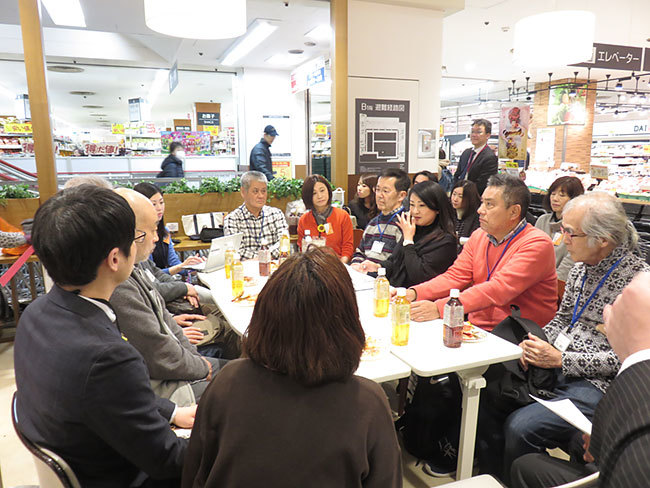
Post-implementation realization: "A place to connect with society and utilize experience"
After implementation, we gathered feedback on this initiative from all involved parties.
First, Daiei, participating from a corporate perspective, highly valued the initiative, stating it was extremely helpful to directly hear authentic opinions from the consumer perspective. Mr. Motonari Yoshioka from Daiei's Digital Promotion Project, who sat at the table with us, commented: "What struck me was the realization that we must explore what consumers feel from their perspective, ensuring the space functions as a 'shopping place' rather than just a 'sales floor'. We are delighted to have connected with people who wish to make Konandai a better town, and we intend to consider how to reflect the feedback received in our sales floors and services."
The Minato Ward Social Welfare Council expressed high expectations that the "Living Lab," where participants help solve corporate challenges, will play a vital role as a place for retired men to maintain social connections and utilize their experience and knowledge, ultimately contributing to regional revitalization.
Above all, the senior men who gathered were very pleased that their opinions were useful. They expressed their desire to participate again in the future, noting that learning about this method of social contribution was especially meaningful since the theme was their own neighborhood.
We, too, felt a tangible response, reaffirming that both businesses and residents seek such opportunities. This "Human Research Living Lab" will be held every two months, with meetings focused on solving various challenges faced by businesses, society, and residents. Regular implementation will deepen discussions, attract new participants, and enable these individuals to become opinion leaders among seniors, contributing to the community.
ultimately helping to revitalize the market.
Our 'Hito-Ken Living Lab' is seeking challenges and themes from companies.
At the same time, we are also recruiting local residents to participate, though currently, participation is limited to those residing in Minami Ward.
While certain conditions apply, if you are interested, please feel free to contact us.
Contact us here.
hitoken@videor.co.jp
Video Research Ltd. Human Research Institute "VR Aging Lab"
Video Research Ltd.'s think tank, the Human Research Institute, established a senior research team to revitalize the senior market. To capture the reality of seniors and apply it to marketing activities, we conduct research, disseminate information, and provide consulting services to companies for senior marketing.
Hito Research Institute:
http://www.videor.co.jp/hitoken/#anc2
Was this article helpful?
Newsletter registration is here
We select and publish important news every day
For inquiries about this article
Back Numbers
Author

Tomiko Tsushima
Video Research Ltd.
Human Research Institute
Principal Researcher
After working as a strategic planner at a research firm and a foreign-affiliated advertising agency, he joined Video Research Ltd. He is involved in lifestyle research, primarily focusing on understanding the trends and attitudes of the senior demographic and exploring effective approaches, supporting companies in solving their challenges.



